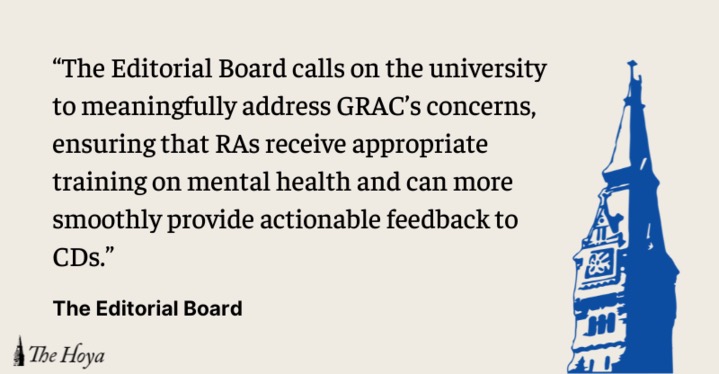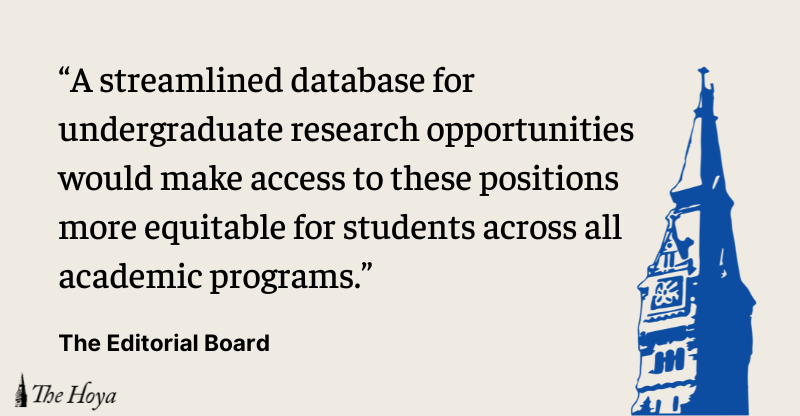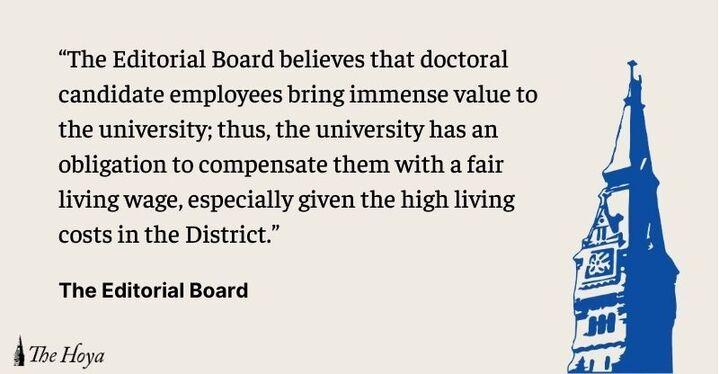Georgetown University is notoriously unfit for individuals with physical disabilities. Elevators break, buttons to open doors are nowhere to be found and students are left searching for university support.
Unfortunately, the university has not yet established an effective framework for addressing its accessibility problems, nor has it made the existing resources easy for students to use.
To foster an environment where the entire Georgetown community can experience the campus unencumbered, administrators must designate an official to ensure compliance with federal law, in addition to centralizing resources in one office.
Georgetown has an unmet obligation — both legal and moral — to address the areas in which it has long fallen short of the Americans with Disabilities Act. Under the 1990 law, Georgetown is obligated to provide reasonable accommodations to students with disabilities. However, the university has a well-documented history of delaying response to concerns of ADA violations.
To prioritize accessibility, the university should assign an official to regularly ensure the compliance of buildings with the ADA. This official should oversee a centralization of existing resources for students with disabilities in one online location, so that students do not have to seek out piecemeal accommodations for each aspect of their lives.
Georgetown has a wide array of accessibility issues to address, most notably doors with ineffective — or simply nonexistent — ADA push-to-open buttons.
As Anna Landre (SFS ’21), who currently serves as chair of the Georgetown University Student Association accessibility policy team, wrote in a 2017 op-ed in The Hoya, the university’s failure to address this easy-to-fix problem left the Healey Family Student Center and Reynolds Hall simply inaccessible for some students.
Students in residential living spaces are also regularly confronted by broken elevators and, as reported in The Hoya last week, doors that require more than five pounds of force to open — an obstacle in the path of students wishing only to return to their rooms, and a clear violation of the ADA.
These hindrances are severely restrictive to students, yet Georgetown has the means to address them.
In an April 6 report in The Hoya, Landre, Lydia Brown (COL ’15) and Anastasia Somoza (COL ’07) — student leaders over two decades of accessibility advocacy at Georgetown — lamented the university’s inability and unwillingness to respond to student complaints.
“I’m not just going to sit around and complain about it and expect someone else to — because I know that’s not going to happen,” Landre said at the time.
Too often, the burden of identifying and highlighting accessibility concerns falls to students with disabilities. Georgetown must bear the responsibility of actively ensuring compliance with the ADA, instead of relying on students to catch the university in its negligence.
Under current policy, ADA compliance issues are assigned on a case-by-case basis. Non-discrimination and equitable employment concerns are directed to the Office of Institutional Diversity, Equity and Affirmative Action, while the Academic Resource Center handles academic accommodations and medical housing.
The Office of Planning and Facilities Management is tasked with addressing work order requests, such as broken elevators and faulty ADA-compliant buttons on doors, while the Georgetown University Transportation Shuttle handles requests related to transportation difficulty.
Georgetown’s approach to accessibility is structured to address one-off situations, rather than recognizing the problematic reality that our campus is not designed to meet the needs of all of its students.
The university should develop a process of regularly checking buildings, doors, elevators and other areas with histories of inaccessibility, instead of relying on students who report difficulty navigating campus. Furthermore, the university should aggregate all of its accessibility resources — including the coordinator responsible for monitoring campus — under one office, such as the IDEAA.
Monitoring ADA compliance must no longer be the responsibility of students with disabilities. Georgetown needs to clearly demarcate an entity responsible for ensuring the campus meets accessibility standards, and represent this group’s efforts clearly and effectively to the university community.
The Hoya’s editorial board is composed of six students and is chaired by the Opinion Editor. Editorials reflect only the beliefs of a majority of the board and are not representative of The Hoya or any individual member of the board.







